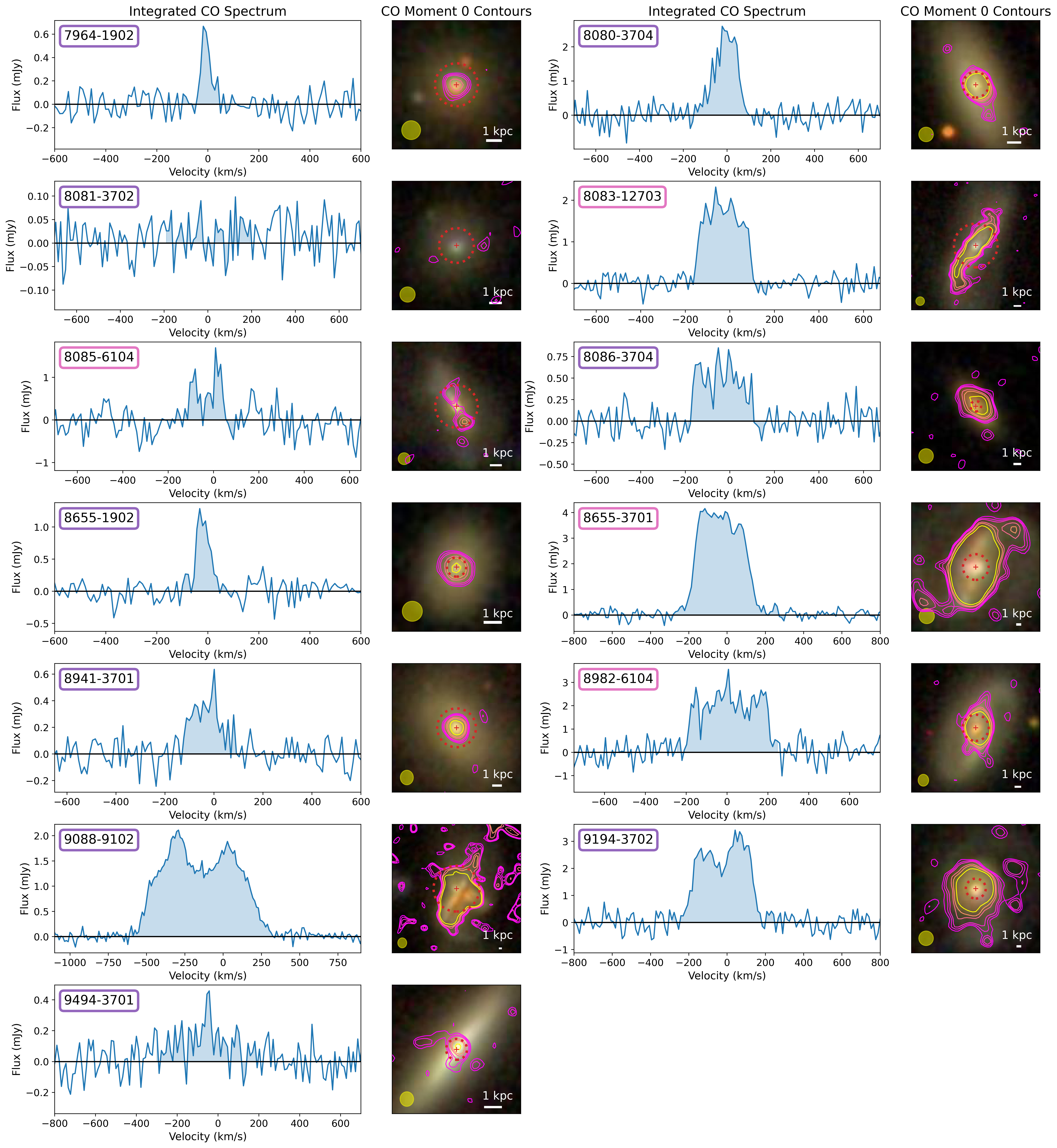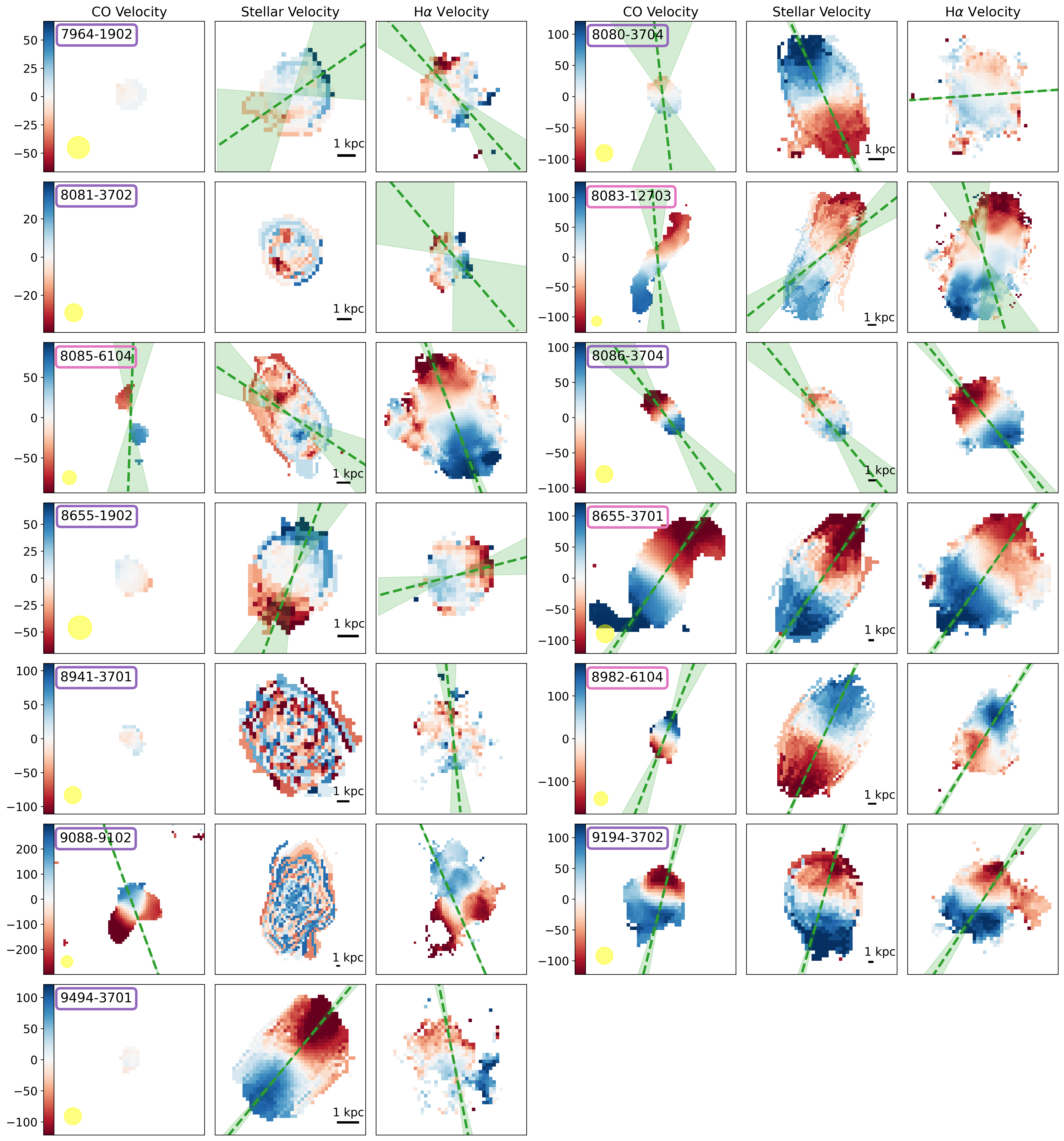Molecular gas properties of post-starburst galaxies
Post-starburst galaxies (PSBs) have rapidly and recently quenched their star-formation, making them an important evolutionary link for how galaxies transform from blue, star-forming spirals to quiescent early-types. The molecular gas is key to understanding the shut-off of star-formation in these galaxies as it is the fuel for star-formation.
It turns out that PSBs typically have significant molecular gas reservoirs, but only a handful have spatially resolved molecular gas observations that can tell us about the morphology and kinematics: both are key for understanding why these gas reservoirs aren’t forming stars.
We have been studying 13 nearby PSBs in the MaNGA survey (an optical integral field spectroscopy survey) with matched-resolution CO(1-0) ALMA observations to try to figure out what the gas is doing in these galaxies and what it might tell us about the quenching mechanisms shutting down star-formation in PSBs.


Overall, we have found that the compactness of the molecular gas and lack of coherent rotation show these galaxies are highly disturbed. For PSBs quenching globally or in their centers, a major merger could disturb the gas and drive it inwards, leaving a compact reservoir of gas stabilized against star-formation. For PSBs quenching on the outskirts, the picture is less clear but a minor interaction, stellar bar, or gas stripping could contribute to quenching.
For more information, check out my poster from AAS 240, and look out for a publication soon.
Previous work
Protoplanetary disks in the Orion Nebula Cluster (ONC)
As an REU student I worked with Adam Ginsburg studying protoplanetary disks in the ONC with ALMA. We cataloged 127 disks, including 15 newly detected sources. We split our sample into the foreground ONC disks that are exposed to the radiation from the bright Trapezium stars (IR-detected), and the heavily enshrouded OMC-1 disks that are shielded from this radiation (IR non-detected). We find the disks in both samples are smaller than disks in less dense star-forming regions, indicating that environmental processes in both environments (photoionization for the ONC disks, and dynamical interactions for the OMC-1 disks) are effective at truncating the disks.
For more information, check out the publication: Otter et al. (2021)
Galactic conformity in morphology
As an undergraduate at Haverford College, I worked with Karen Masters to study the phenomenon of galactic conformity, where satellite galaxies tend to exhibit similar properties as the central galaxy in a group. While previously this effect had been studied with star-formation and color, we expanded this analysis to morphology using Galaxy Zoo 2. We found that the conformity signal is stronger for star-formation properties than morphology, suggesting that star-formation properties are more easily changed in a group environment than morphological ones.
To read more, see the publication: Otter et al. (2020)